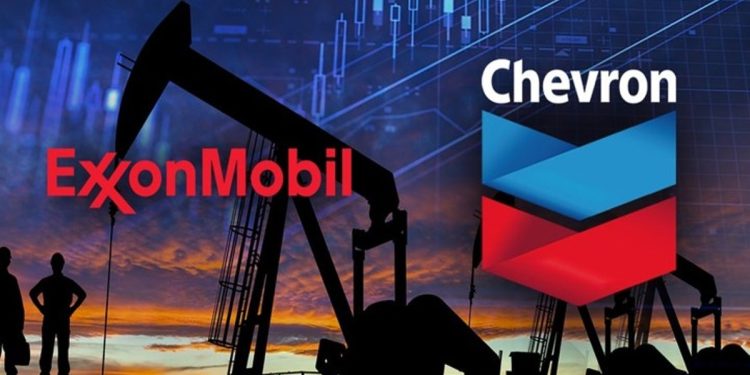Exxon and Chevron Are Ahead of European Rivals Due to Production in Guyana and the United States
ExxonMobil and Chevron are increasing production in some production regions, with oil becoming the driver of growth.
ExxonMobil and Chevron forecast that their production in the Permian Basin will increase by 10% this year. Exxon also reported that oil production in Guyana in the first quarter increased by 70% compared to a year earlier. This is enough to provide almost a fifth of the global demand growth forecast by the IEA, Bloomberg writes.
To be fair, both American majors’ results for the past quarter were significantly lower than the records of 2022 and even lower than 2023, and both attributed this to falling gas prices.
But with oil, everything is becoming more optimistic: Guyana and the US Permian Basin are characterized by relentless growth in production. Now Exxon and Chevron are looking to strengthen their positions ahead of European competitors. Exxon is set to become the leading Permian producer after completing its $64 billion acquisition of Pioneer Natural Resources, while Chevron will spend $52 billion on Hess to take a 30% stake in the rich Stabroek block in Guyana.
The Permian region and Guyana “are large growth drivers for both companies,” said Neil Dingmann, an analyst at Truist Securities. “There are definitely concerns about inventory in the US and shortages around the world due to the lack of investment in the group for several years.”
After several years of reduced investment in oil and gas, crude oil supplies are once again constrained. Brent traded above $90 a barrel earlier this month, and tensions in the Middle East threaten to push prices higher. Despite all efforts to switch to more environmentally friendly energy sources, oil demand this year will increase by about 1.3 million bpd and reach a new record, writes Bloomberg.
Europe’s Shell and BP, which are set to report within the next two weeks, are in a completely different position. Shell pulled out of Guyana a few months before Exxon drilled its first field in 2015 and sold its Permian Basin field to ConocoPhillips in 2021. BP’s presence in the US’s largest shale basin is much smaller than that of any of the US’s largest companies.
Moreover, Shell and BP have been pushing into renewable energy in recent years. Now they are returning to increasing oil and gas production. But this is easier said than done, and the growth profiles of the European majors to 2030 are much weaker compared to their American competitors – assuming the Pioneer and Hess deals are completed.
For Exxon and Chevron, which were in the first wave of ESG investments in fossil fuels, targeting the Permian Basin and Guyana will not only increase production, but will also reduce overall supply costs. Both regions can produce oil with a profit of less than $35 per barrel.
At the moment, both Exxon and Chevron are stuck in a holding pattern, awaiting the closing of their acquisitions of Pioneer and Hess. The first is awaiting approval from the Federal Trade Commission, and the second is involved in arbitration as Exxon claims it has a right of first refusal over Hess’s 30 percent stake in Guyana. Despite this, both majors say they expect to complete their deals by the end of the year.











